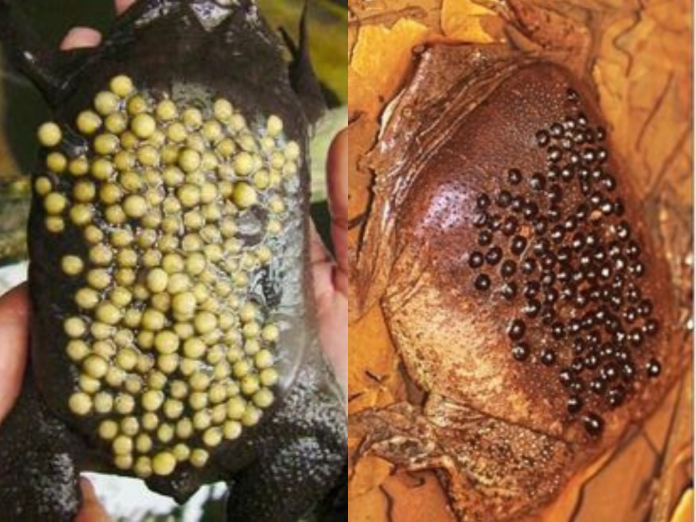Prepare to be captivated by the remarkable Suriname Toad, a South American amphibian species (Pipa pipa) that defies conventional reproductive norms. Nature never ceases to amaze, and this creature’s unique reproduction method is nothing short of extraordinary.
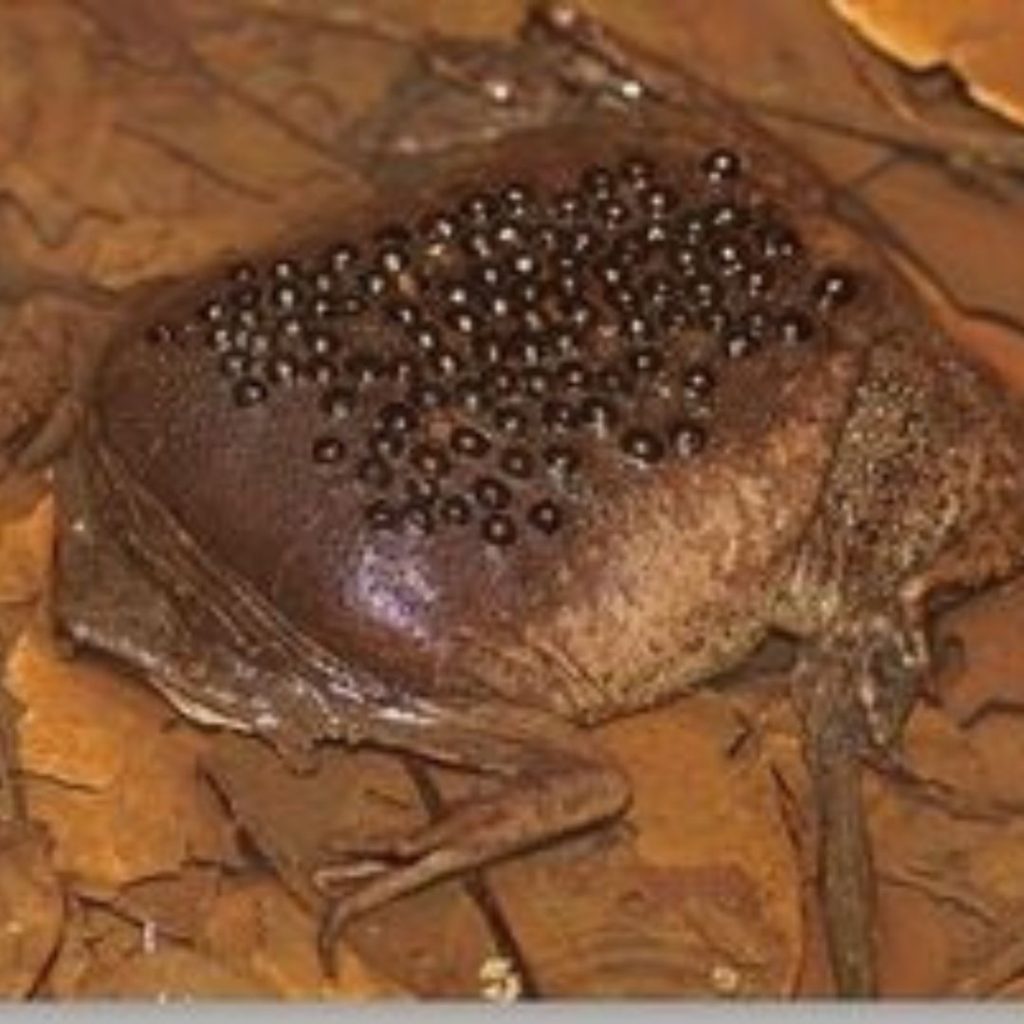
Picture this: female Suriname Toads don’t lay their eggs in water like most amphibians. Instead, they embed them into their own skin, forming a honeycomb-like structure that protects and sustains the developing tadpoles until they are fully matured. It’s a fascinating adaptation that sets this species apart from the rest of the amphibian kingdom.
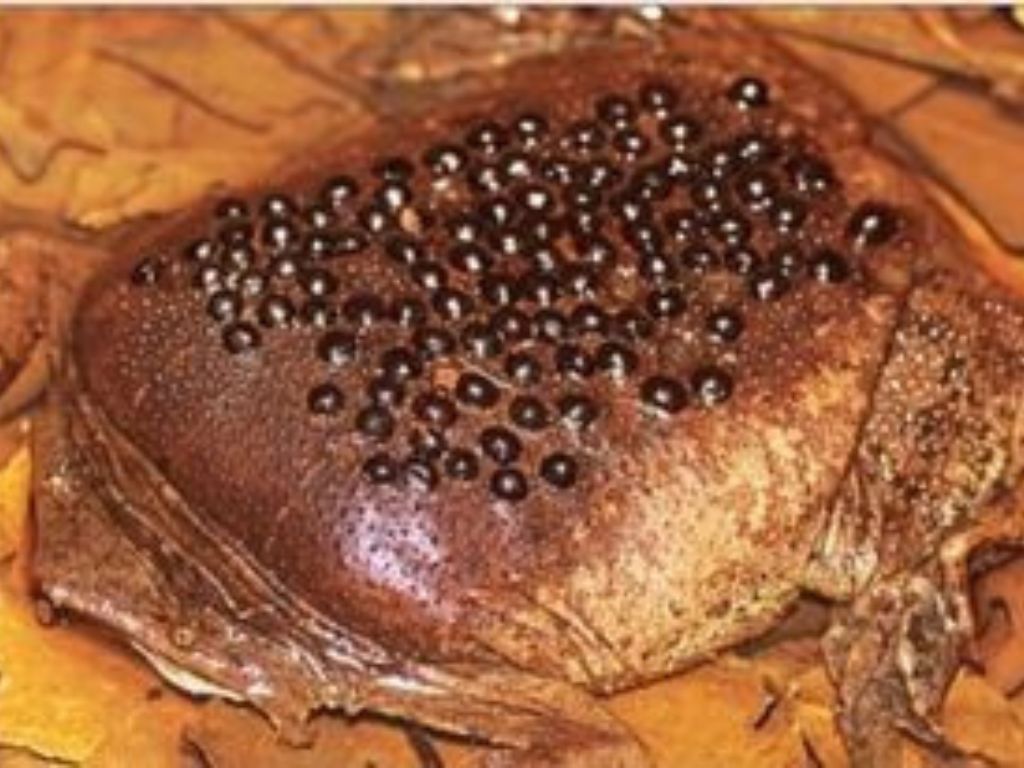
But that’s not all that’s intriguing about these creatures. Their appearance resembles a mottled brown leaf, allowing them to blend into their surroundings seamlessly. With dark spots scattered across their light brown skin, they effortlessly evade predators. Their flat, leaf-like shape and lack of teeth or tongues further contribute to their unique identity. And let’s not forget their small, triangular heads adorned with tiny black eyes, adding to their enigmatic allure.

Male Suriname Toads employ a distinctive strategy to woo their mates in courtship. Emitting sharp clicking sounds, they attract females before initiating a process known as amplexus. During amplexus, the male grasps the female’s front leg, causing her cloche and skin to swell—a mesmerizing display of amphibian courtship. Together, they rise from the floor, flipping through the water in synchronized harmony. Surface breaks for breath are brief as they resume their aquatic dance, eventually settling with the male on his back and the female on top, belly to belly.
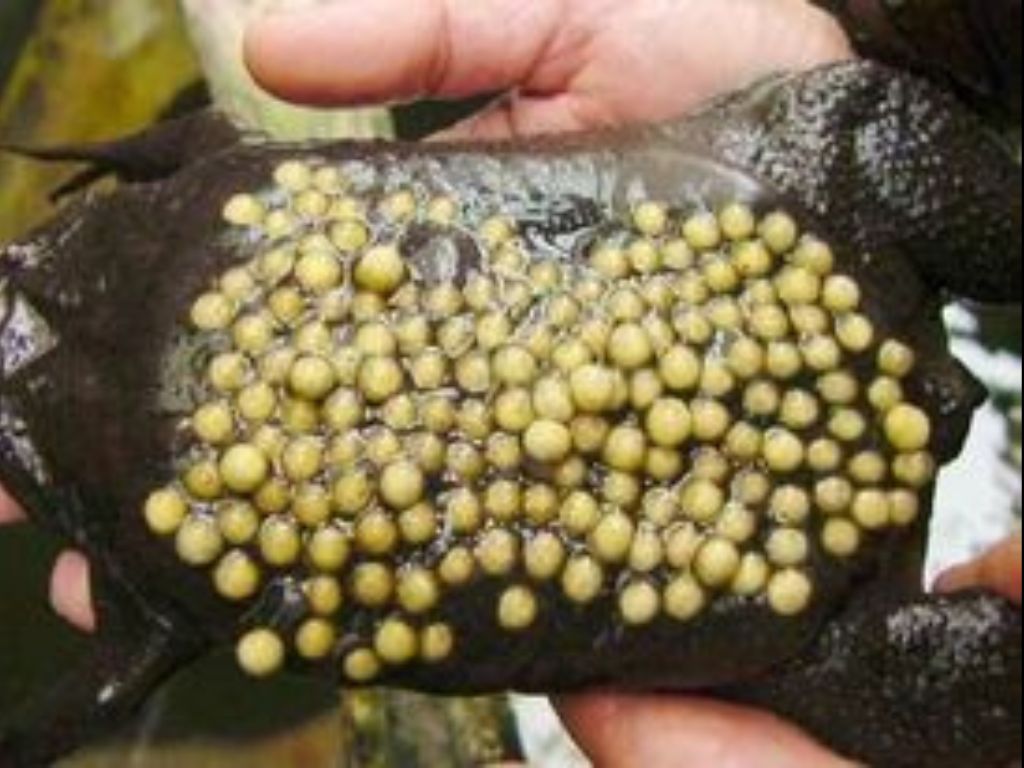
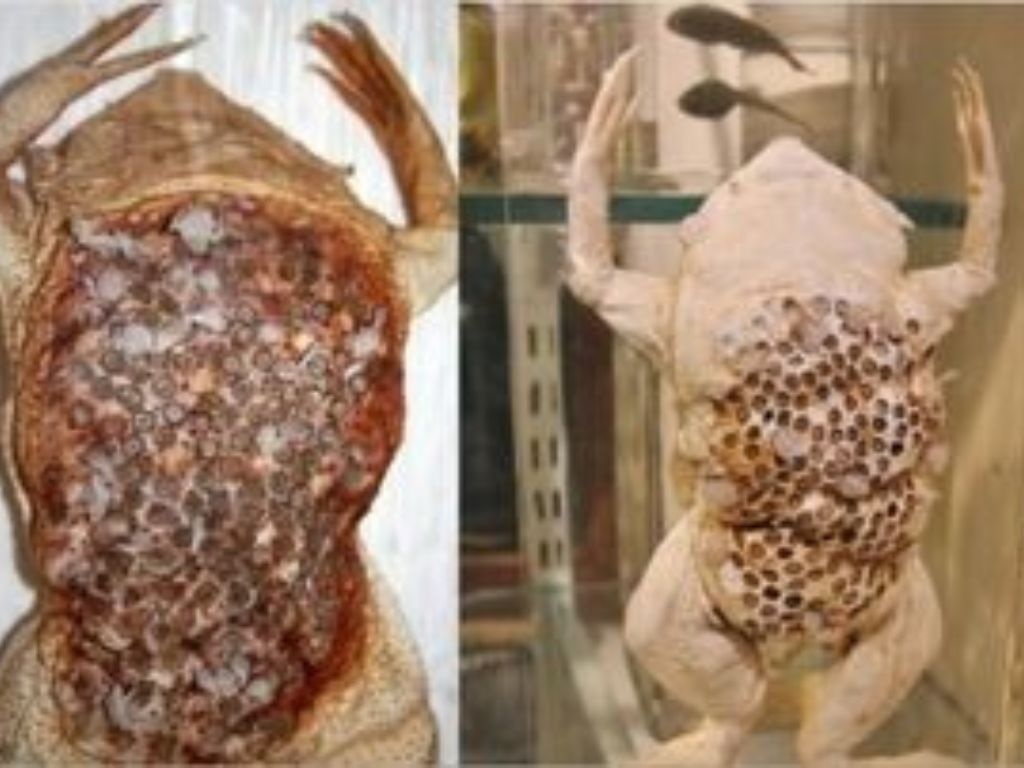
It’s during this intimate embrace that the magic of reproduction unfolds. With each coupling, the female releases a clutch of eggs—typically 3 to 10—which become embedded in the specialized pockets of her skin, courtesy of the male’s movements. This process can repeat up to 10 times, resulting in a series of honeycomb-like structures housing developing embryos.
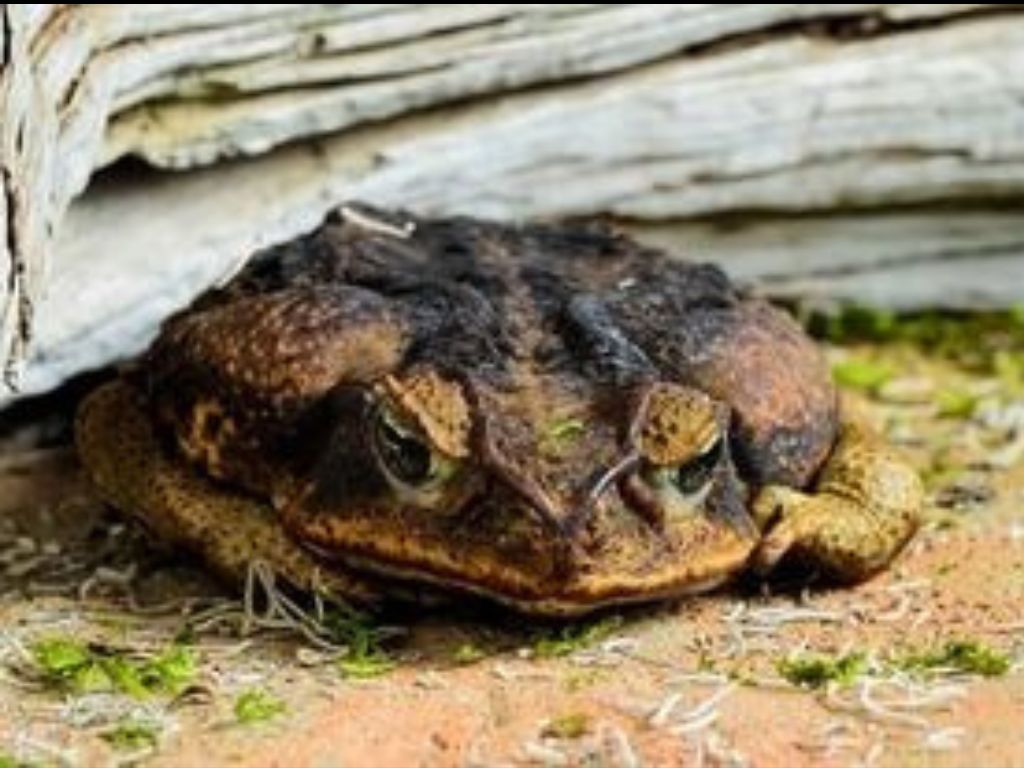
Throughout 12 to 20 weeks, these embryos progress through the tadpole stage within their cosy confines, nourished by the nutrients supplied by their mother’s skin. And when the time is right, the fully formed toads emerge, ready to embark on their journey into the world. But the wonder doesn’t end there; after delivering her offspring, the mother sheds the layer of skin that facilitated their birth—a symbolic gesture of renewal and regeneration.

In a world where nature constantly surprises us with its ingenuity, the Suriname Toad stands out as a testament to the boundless possibilities of life. Its unconventional reproductive strategy and enigmatic beauty remind us that there is always more to discover and marvel at in the natural world.
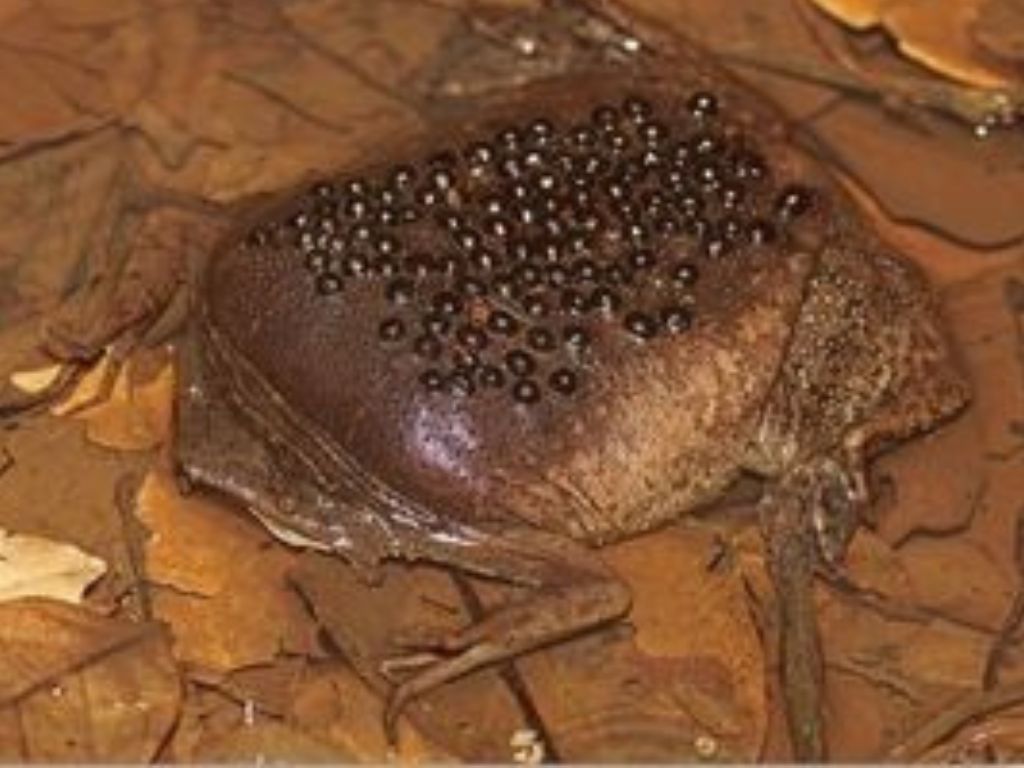
Experience the wonder of the Suriname Toad for yourself—an extraordinary creature that defies expectations and invites us to ponder the mysteries of existence.

Could you go and check my other article also?

